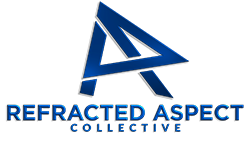
Data alone doesn’t move the needle. It’s the decisions you make from that data that define your commercial success. Yet, many leaders find themselves drowning in CRM metrics without a clear path to action. The frustration isn’t just about volume—it’s about relevance, timing, and alignment with business priorities.
- When CRM Data Becomes Noise Instead of Insight
- Why Strategic CRM Remains a Persistent Challenge
- Rethinking CRM: From Data Collection to Decision Enablement
- Challenging the Conventional CRM Playbook
- Leveraging CRM for Commercial Clarity: A Third Perspective
- Five Practical Actions to Improve Your Strategic CRM
- Strategic CRM as a Reflection of Leadership and Operational Discipline
- How Refracted Aspect Can Help You Get Clear on Revenue
When CRM Data Becomes Noise Instead of Insight
There’s a common tension in leadership rooms: the CRM system is full, but the team feels directionless. You’ve invested in tools, processes, and training, yet the commercial impact remains elusive. The disconnect isn’t accidental. It’s a symptom of how data is collected and interpreted.
Founders and operators often face this reality—too much data, too little clarity. The CRM becomes a repository rather than a strategic asset. This creates a cycle where decisions are delayed or based on gut feel, not evidence. The pressure mounts as revenue targets loom, and the CRM’s promise feels unfulfilled.
It’s not just a technical problem. It’s an emotional one. The weight of responsibility to turn data into decisions can feel isolating when the system doesn’t deliver actionable insights. This tension is real and persistent.
Why Strategic CRM Remains a Persistent Challenge
The root causes run deeper than software or process gaps. Market complexity means customer journeys are rarely linear. This complexity clashes with traditional CRM models designed for simpler sales cycles. The mismatch creates blind spots that leaders struggle to see.
Internal resistance compounds the issue. Teams may resist change or lack the skills to interpret data strategically. Mental models focused on activity over outcomes skew priorities. The result is a CRM that tracks tasks but misses commercial signals.
Systemic issues also play a role. Data quality suffers when inputs aren’t standardized or when incentives don’t align with accurate reporting. Without clean data, even the best analytics fail. This creates a risk of decision paralysis or missteps based on flawed information.
Rethinking CRM: From Data Collection to Decision Enablement
Strategic CRM isn’t about capturing every detail. It’s about capturing the right details that inform commercial decisions. The shift is from volume to value.
Focus on decision points, not data points. Identify the moments in your sales and customer lifecycle where decisions must be made. Tailor your CRM inputs to illuminate those moments clearly.
This reframing changes how you design processes and train teams. It demands discipline in data entry and a ruthless focus on what moves the business forward. It also means integrating CRM insights with broader commercial strategy, not treating it as a siloed tool.
Challenging the Conventional CRM Playbook
More data is not better data. The temptation to track everything dilutes focus and burdens teams. Instead, prioritize metrics that correlate directly with revenue outcomes.
Another common trap is over-reliance on automation without human judgment. CRM systems can flag trends, but they can’t replace the nuanced understanding a seasoned operator brings. Balance automation with critical thinking.
Finally, avoid the pitfall of treating CRM as a reporting tool rather than a decision support system. The difference is subtle but profound. Reporting tells you what happened; decision support guides what to do next.
Leveraging CRM for Commercial Clarity: A Third Perspective
Strategic CRM success often hinges on cross-functional alignment. Sales, marketing, and operations must share a common language and goals within the CRM framework. Without this, data becomes fragmented and insights incomplete.
Consider CRM as a living system that reflects your commercial ecosystem. Changes in one area ripple through others. Recognizing these interdependencies helps leaders anticipate consequences and adjust strategies proactively.
This perspective encourages ongoing review and adaptation, not set-and-forget implementation. It’s a dynamic approach that respects complexity without succumbing to it.
Five Practical Actions to Improve Your Strategic CRM
- Audit your CRM data fields to ensure each one aligns with a specific commercial decision point. Remove or consolidate fields that don’t serve this purpose.
- Train your team on decision-focused data entry rather than task completion. Emphasize the why behind each data point.
- Integrate CRM insights into regular commercial reviews to connect data with strategy and execution in real time.
- Establish cross-functional CRM governance to maintain data quality and ensure alignment across sales, marketing, and operations.
- Use CRM analytics to identify early warning signs of pipeline issues or customer churn, enabling proactive interventions.
Strategic CRM as a Reflection of Leadership and Operational Discipline
At its core, strategic CRM is a mirror. It reflects the clarity—or lack thereof—in leadership and operational execution. When CRM data informs decisions effectively, it signals disciplined processes and aligned teams.
Conversely, when CRM data confuses or overwhelms, it reveals gaps in strategy and accountability. This is not a technology failure; it’s a leadership challenge.
Leaders who embrace this truth create space for measured reflection and deliberate action. They understand that clarity in CRM is inseparable from clarity in commercial intent. The cost of ignoring this is not just missed revenue—it’s erosion of confidence and control.
How Refracted Aspect Can Help You Get Clear on Revenue
Most businesses we work with aren’t short on effort — they’re short on clarity. Marketing feels active, but results are inconsistent. Sales teams are busy, but the pipeline is fragile. Strategy gets discussed, but execution drifts. Underneath it, the structure is stretched, and accountability is fuzzy. That’s when a proper diagnostic helps.
Refracted Aspect offers a structured Revenue Health Check designed to show what’s working, what’s missing, and what’s quietly getting in the way. This isn’t a quiz or a sales pitch. It’s a tool for insight, not inspiration.
If clarity’s the goal, Get the Revenue Health Check. It’ll show you where the real gaps are — and what to fix first.
















